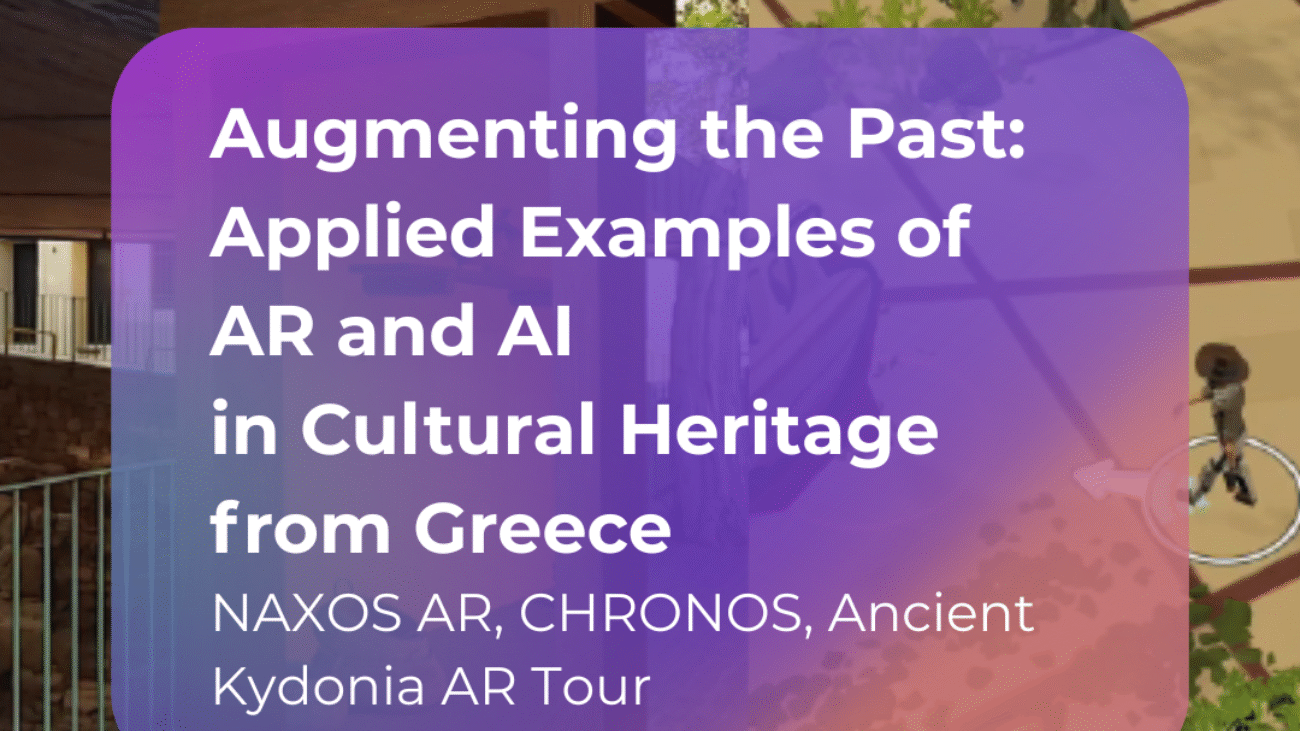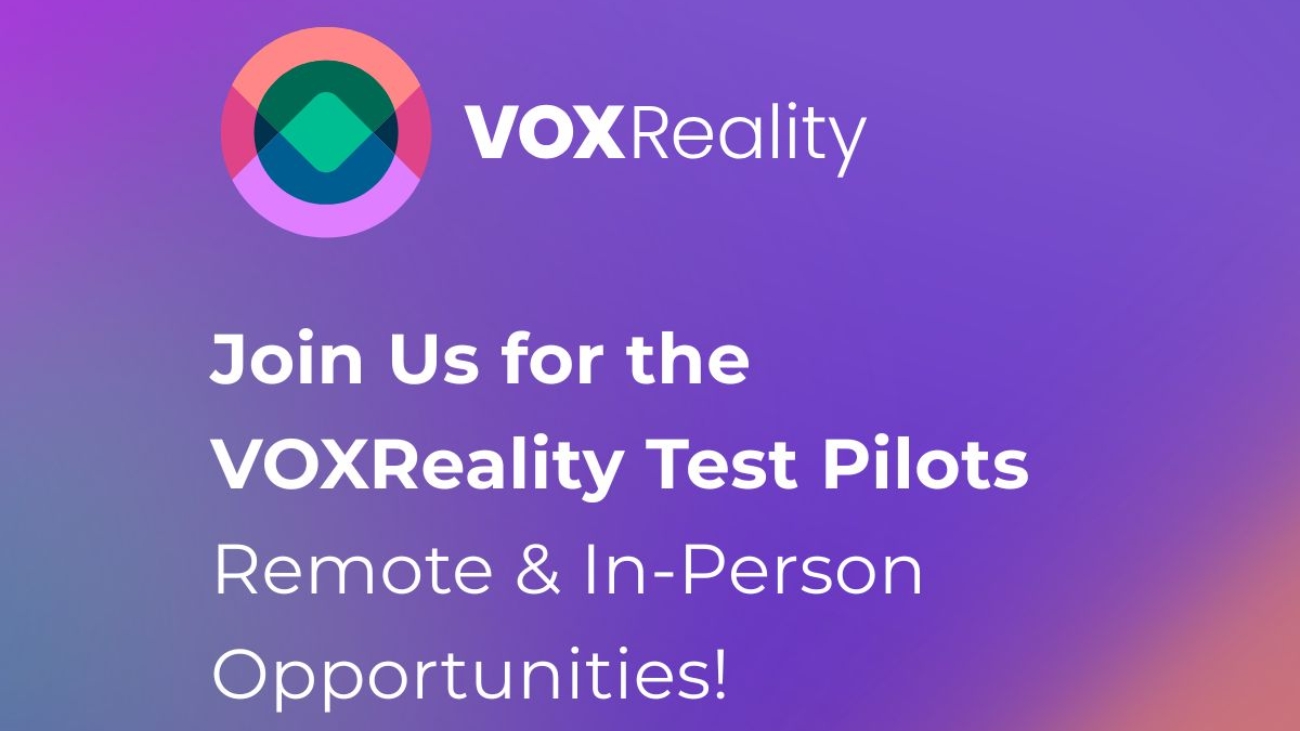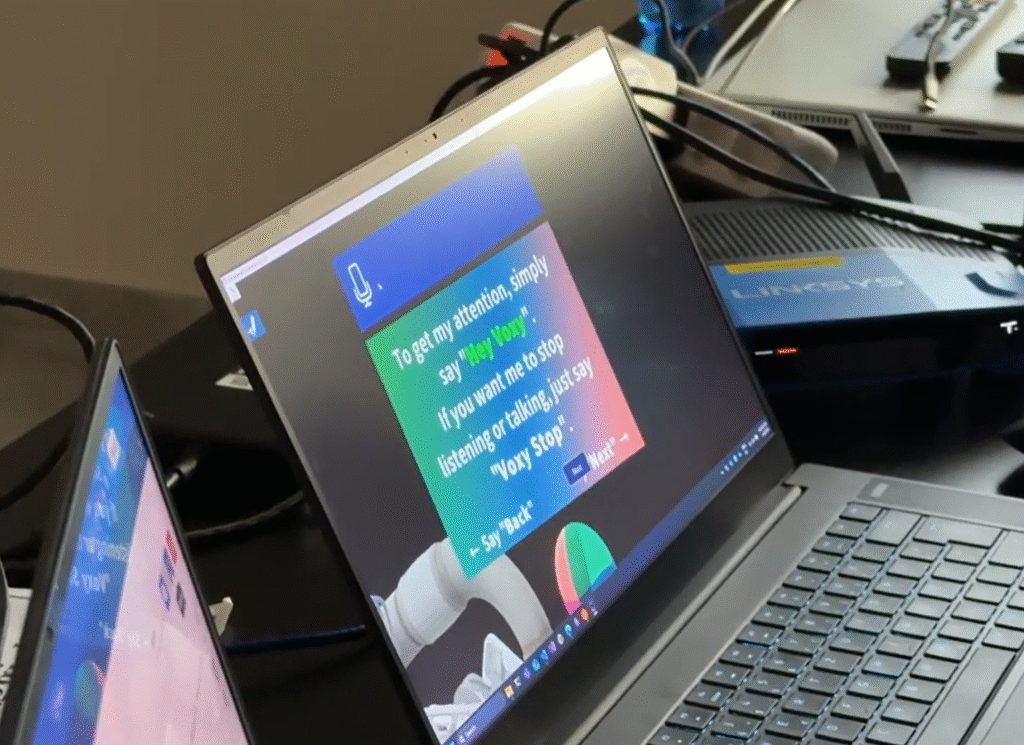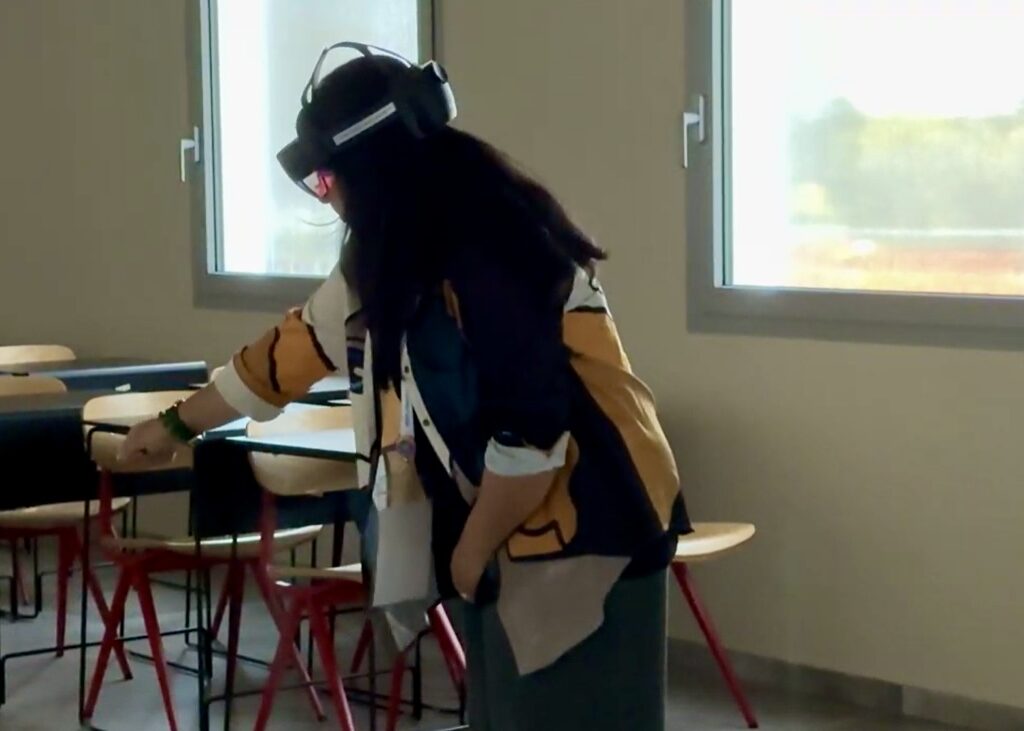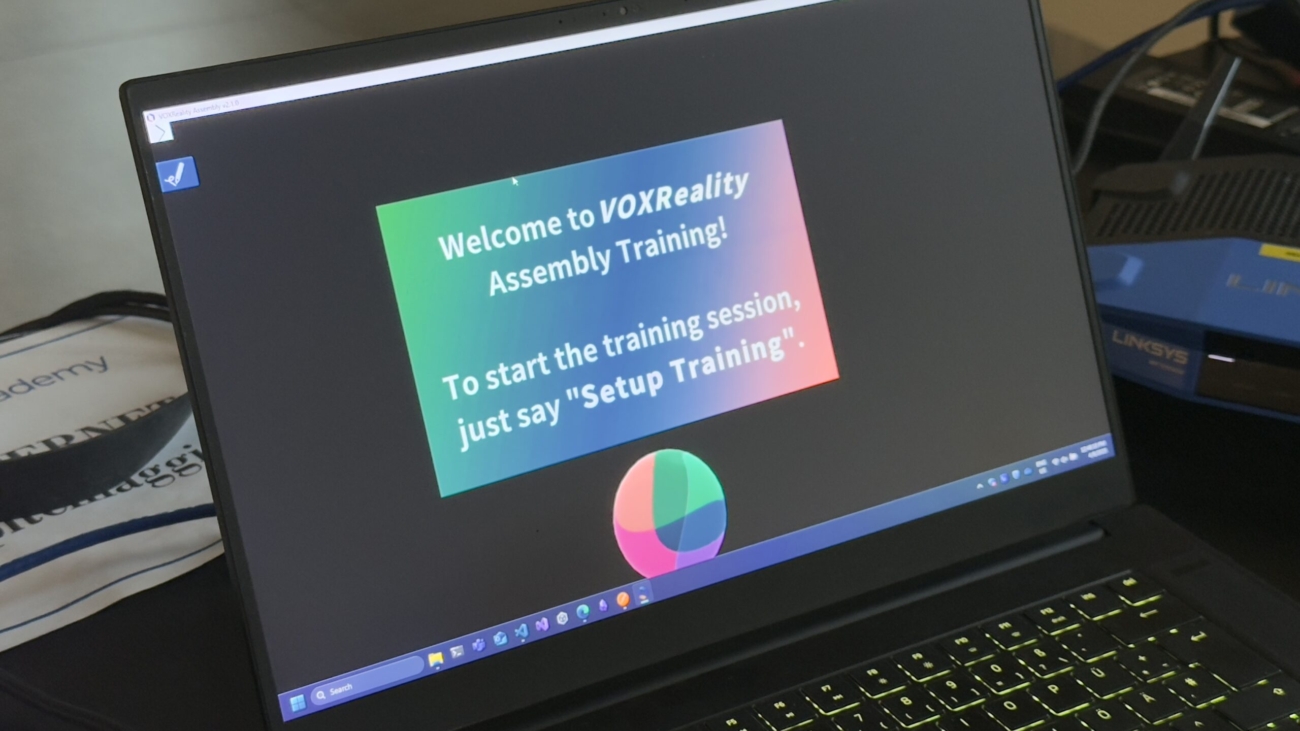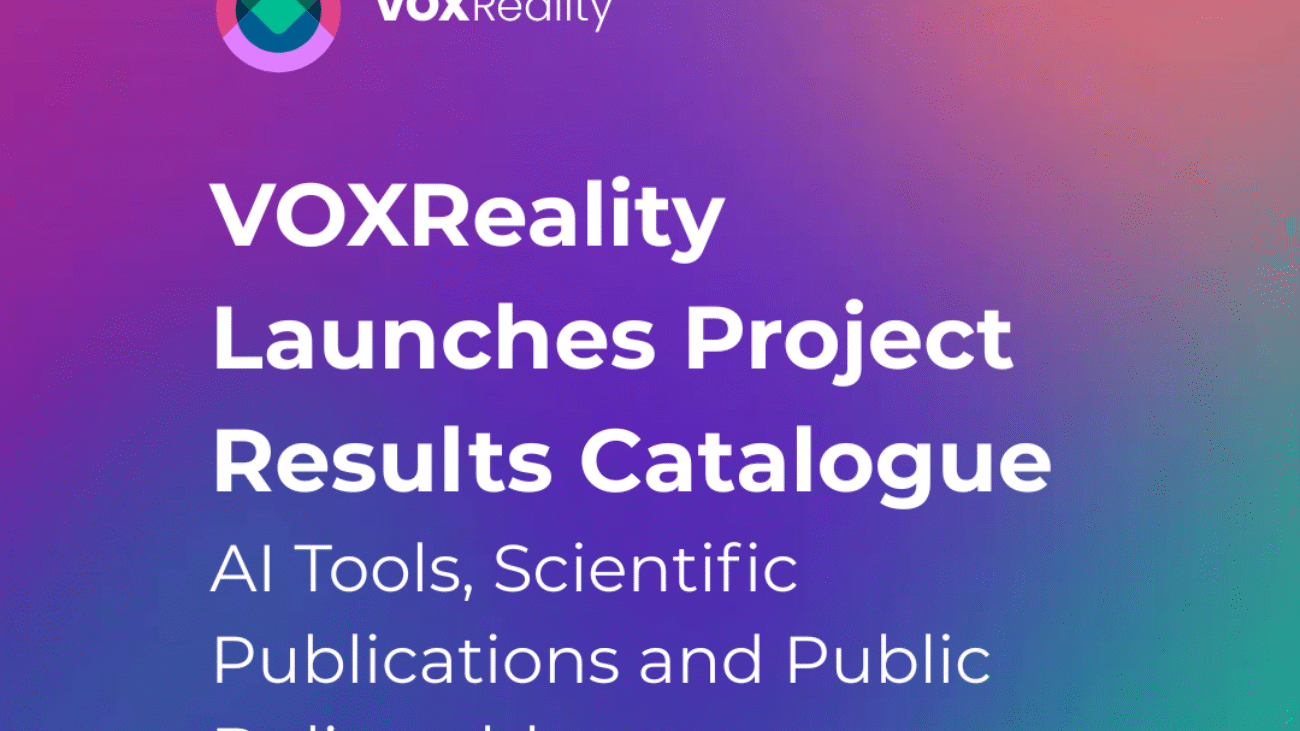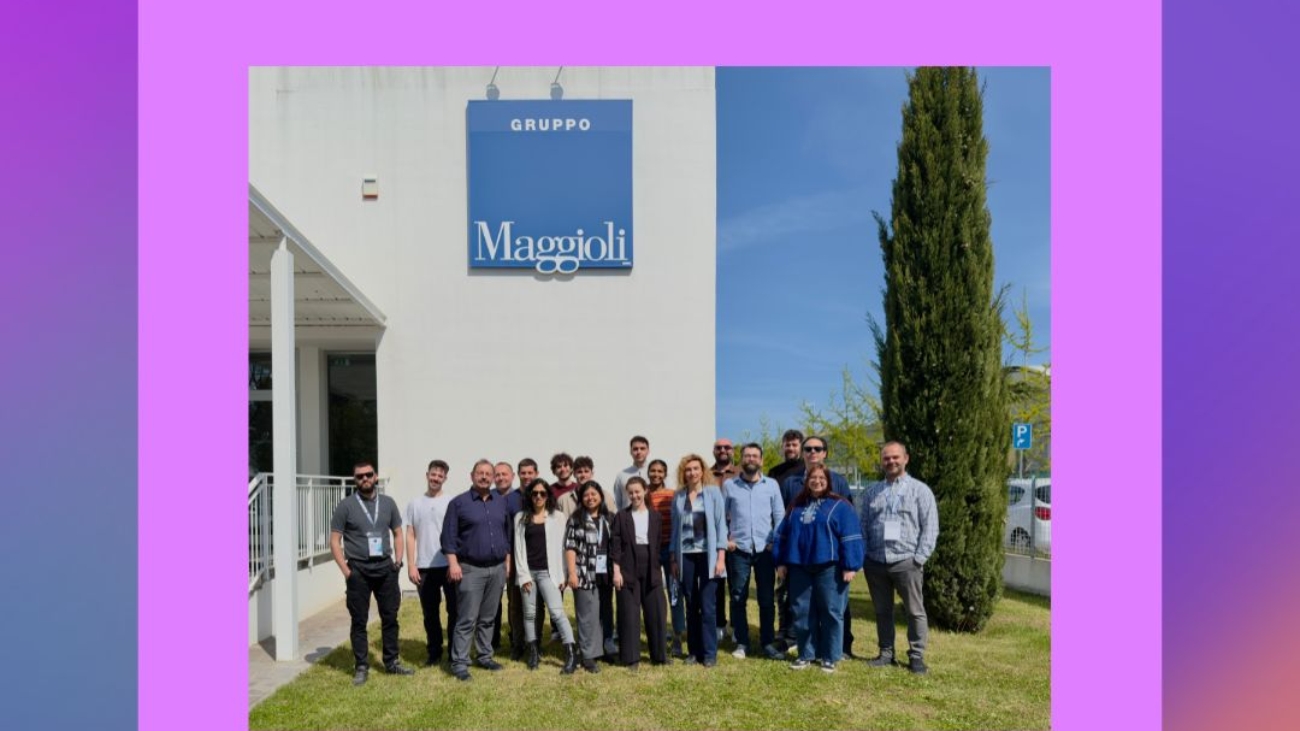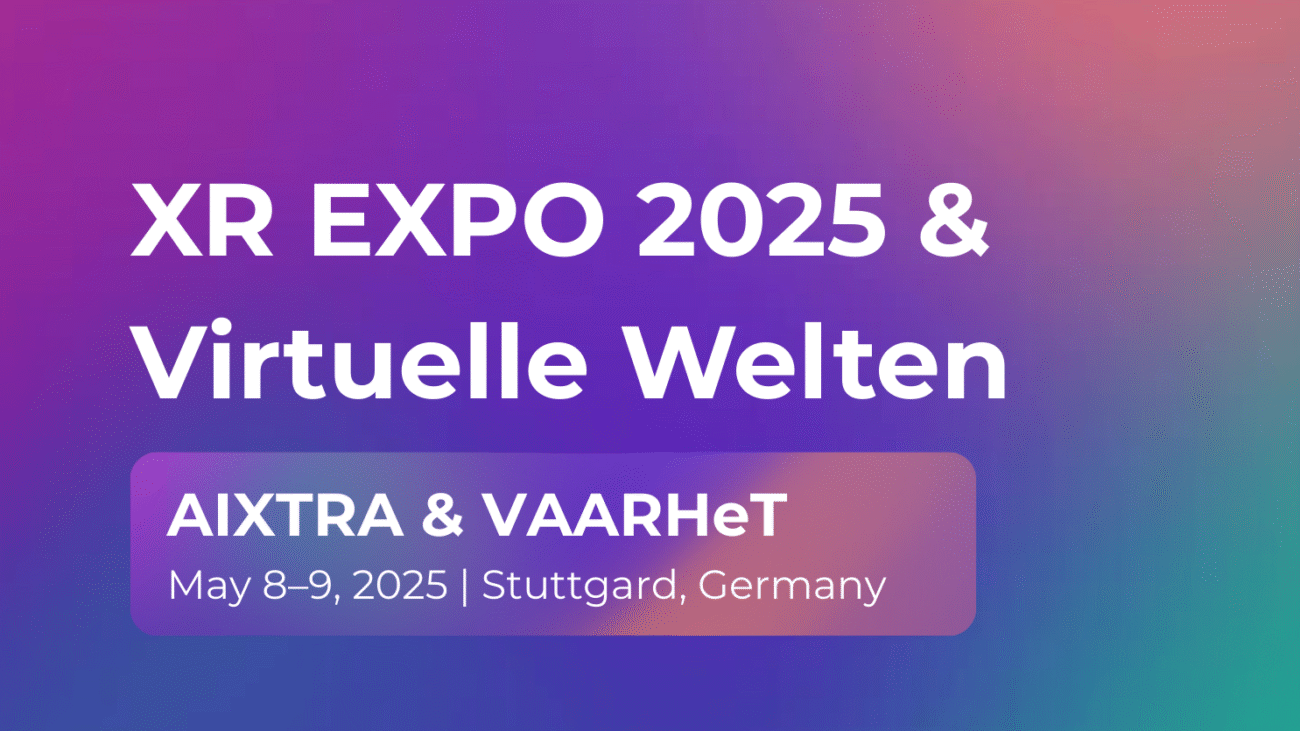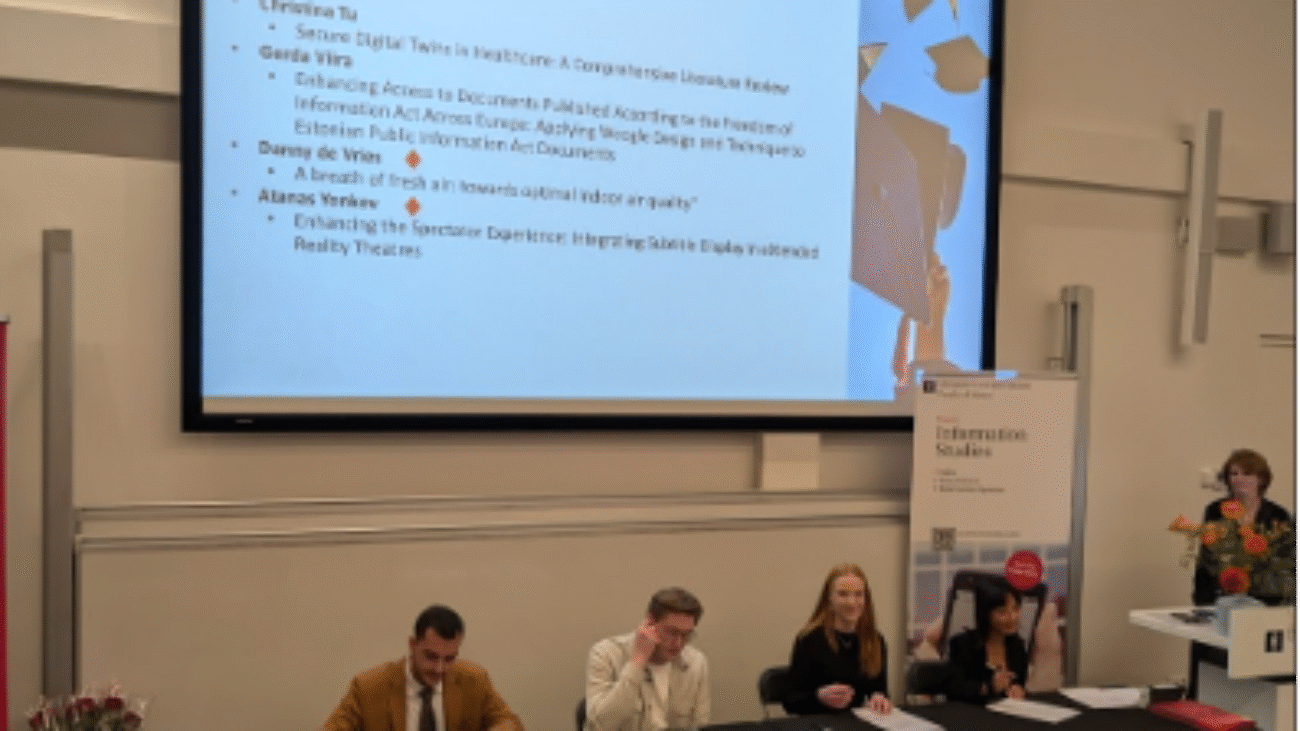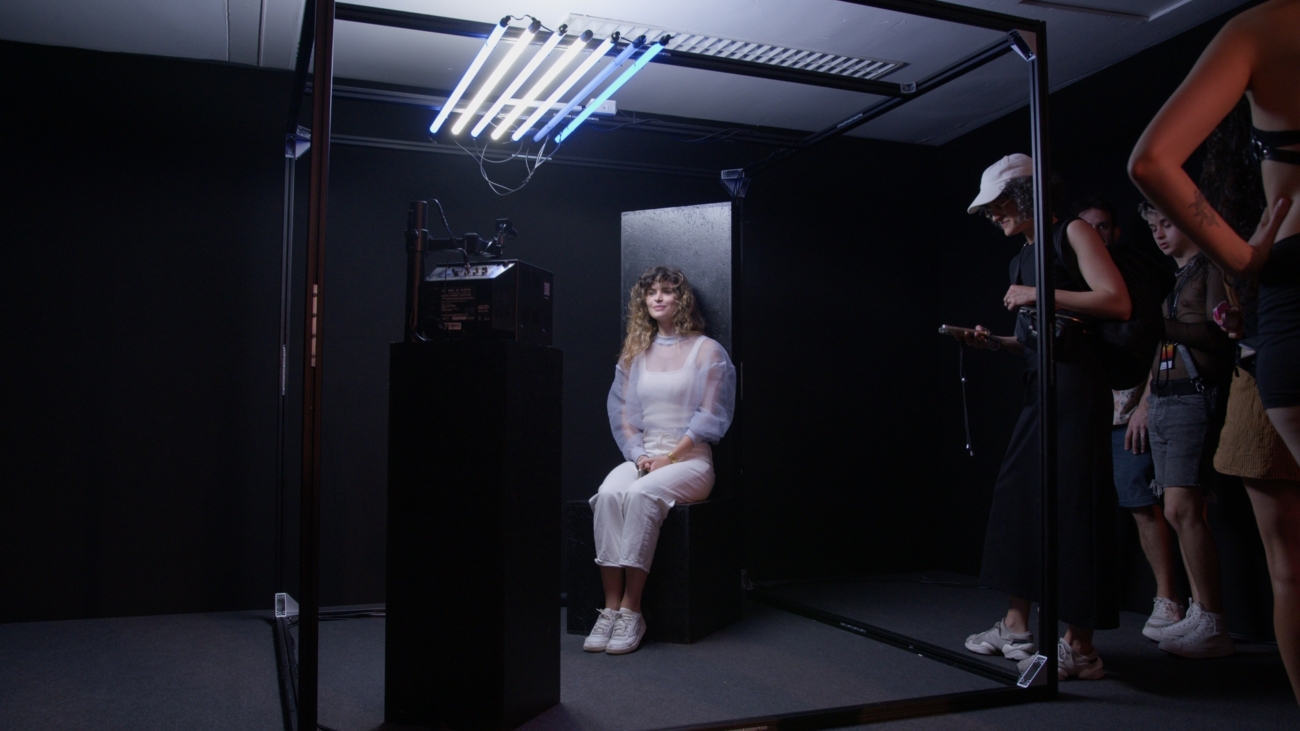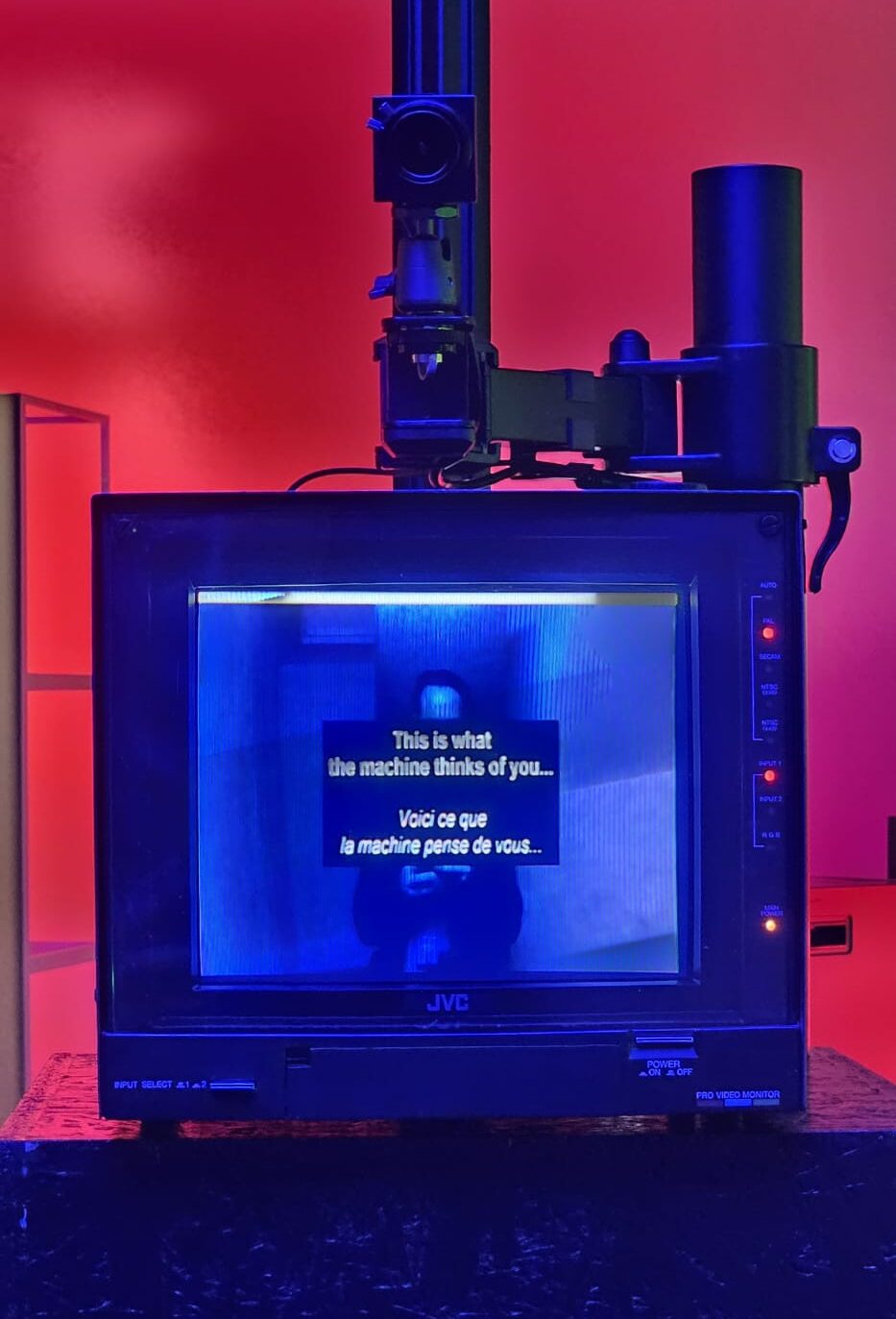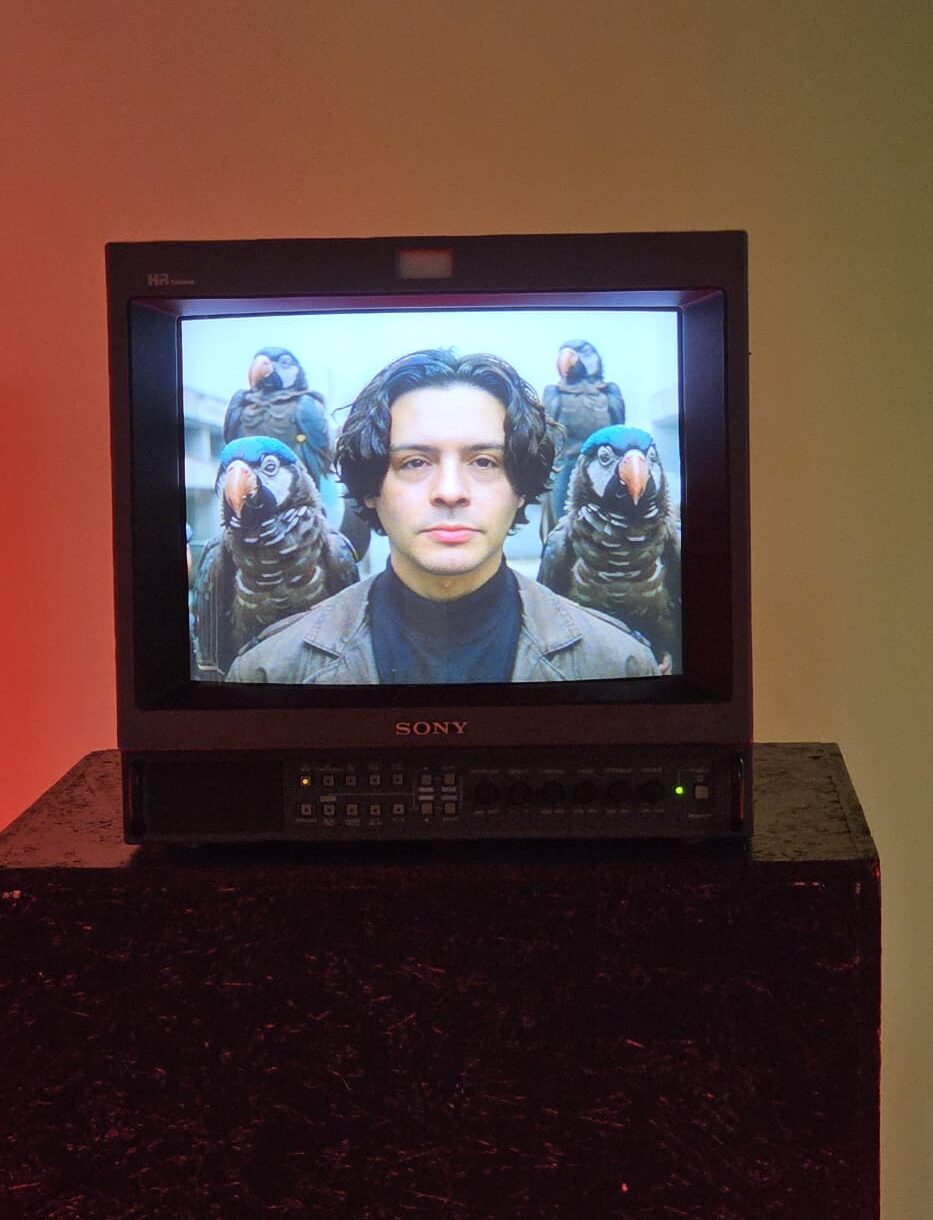From the awe-inspiring ruins of ancient theatres to the timeless stories told through myth and drama, Greece’s cultural heritage is a rich tapestry of human creativity and memory. But how can cutting-edge technologies like Augmented Reality (AR) and Artificial Intelligence (AI) help preserve and reawaken this legacy in the present day?
At VOXReality, we explore how immersive technology can enrich live theatre with real-time augmented content, blending performance with spatial computing. The VOXReality AR theatre project sits at the crossroads of performative arts (the live performance), literary arts (theatrical texts and dramaturgy), and both tangible (theatres and spaces) and intangible (stories, rituals, performance practices) forms of cultural heritage. Our ambition is to use AR to enhance theatrical performances by overlaying digital elements such as visuals, text, and interactive content, directly onto the live stage. Yet this ambition brings a unique set of challenges. A theatre play is a dynamic, tightly choreographed experience. Augmented content must appear at the right moment and in the right place with perfect quality without disrupting the flow or distracting the audience.
To address these challenges, we look to other successful AR/AI applications within Greece’s cultural sector for insights and inspiration. What can we learn from their experiences, and how do our technological choices compare? In this post, we explore real-world examples of applied AR and AI in Greek cultural heritage and examine how they’ve tackled key issues such as content delivery, accessibility, and stability.
Example 1: NAXOS AR – From the Portara to the Temple of Apollo
The NAXOS AR application developed by MOPTIL in collaboration with the Municipality of Naxos and the Ephorate of Antiquities of Cyclades, offers an AR experience at the “Portara” historical location on Naxos Island. The experience provides a historically accurate 3D representation of the Temple of Apollo alongside additional textual background information, validated by academic and institutional partners. The application can be downloaded from acclaimed application distribution platforms and executed on the visitor’s personal smartphone. To keep the installation files lightweight, the application downloads during runtime the required 3D content from a cloud service. If onsite mode, i.e. at the archaeological site, the application performs AR matching to recognize physical landmarks and display the digital reconstruction in the right positioning compared to the existing monument. If the user is in another location, the user can manually position, scale and rotate the 3D content.
The experience successfully addresses:
- performance and robustness are achieved through a standalone application,
- trustworthiness and accessibility are ensured via authorized distribution channels with security validation (like Google Play Store)
- optimal content delivery is facilitated through downloading additional, large-sized content when required from cloud services with ensured streaming bandwidth
- 3D content that is curated by expert archaeologists and
- high quality UI/UX
Overall, the application showcases the feasibility of providing high-quality informational 3D content to the general audience, making cultural heritage more accessible and engaging through mobile AR.
[1] MOPTIL: NAXOS AR – Explore Cultural Heritage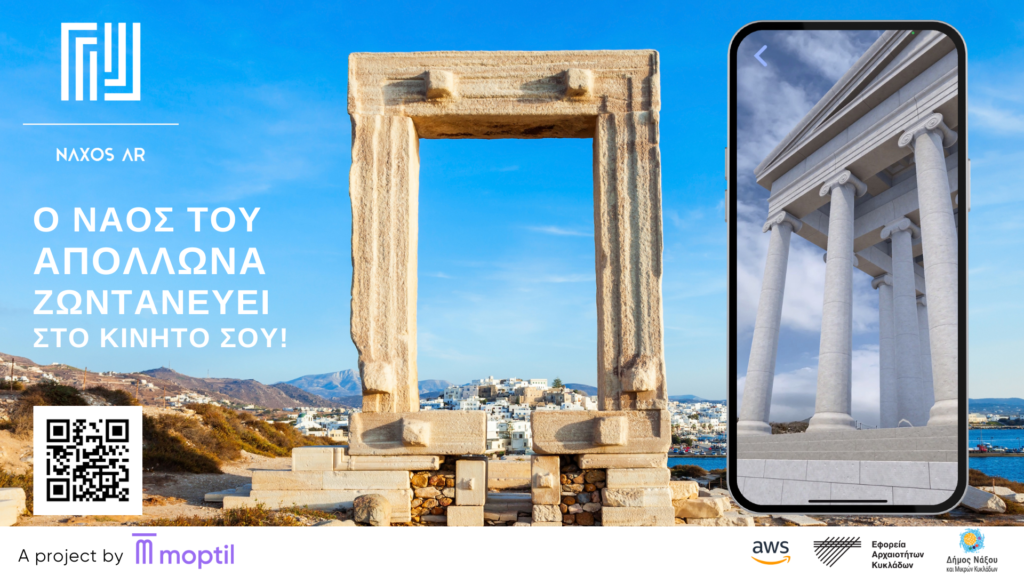
Example 2: COSMOTE CHRONOS – Blending AR and AI for Cultural Heritage
An even more advanced example from Greece is COSMOTE CHRONOS app, a cultural heritage experience that combines Augmented Reality (AR), and Artificial Intelligence (AI) while making use of 5G network capabilities. Originally designed as a 5G use case project, it quickly evolved into a popular app that brings to life the monuments of the Acropolis as they were in antiquity, acquiring more than 400k downloads worldwide. COSMOTE CHRONOS is a COSMOTE (telecommunications provider) project, designed in collaboration with Greece’s Ministry of Culture, the Acropolis Museum, and MOPTIL as technology partner. The app supports both on-site visits at the Acropolis site and off-site access, reimagining how visitors explore ancient monuments and making the cultural experience available to a broader audience.
The application supports similar capabilities with NAXOS AR, in terms of AR content. For example, the 3D models need to be optimised for real time rendering, using the same low poly approach as in the Naxos AR case. But this time, there is a new advantage: at the heart of the experience is Clio, an AI-powered digital assistant who interacts with users in real time, answering questions (written or oral) and guiding them through the virtual past. This dialogue-driven interface is a 5G only feature-that poses a technical challenge – it is made possible through a backend infrastructure that streams content dynamically, relying on high-speed 5G connectivity to enable seamless communication and responsive interaction.
Technically, the app represents a major undertaking with collaboration of partners representing communication infrastructure, immersive technology, artificial intelligence and of course, classical archaeology. Beyond the advanced user interface (UI) and photorealistic 3D reconstructions, special attention was given to the accuracy and adaptability of the AI assistant. A team of archaeologists, scriptwriters, and bot trainers continuously update and refine Clio’s knowledge base by analyzing user interactions and adjusting its responses, accordingly, ensuring an engaging and informative experience for all users. In addition, users also have the option to select a solo or group guided tour, allowing them to listen to historical information as they explore each monument, bringing further challenges in content sharing and synchronization. The group option allows up to 5 visitors to listen to the responses simultaneously in real time.
Culturally, CHRONOS exemplifies a new approach to heritage interpretation through storytelling that blends scientific rigor with emotional engagement of the user. With a custom musical score, thoughtful dialogue, and immersive visuals, the app transforms a visit to the Acropolis into an interactive journey through time, while also being accessible to remote users around the world.
While CHRONOS offers a rich and dynamic UX, it also highlights a key dependency: robust digital infrastructure. Real-time AI interactions require high-bandwidth connectivity, low latency, cloud-based model hosting, and continuous content moderation making it a powerful but infrastructure-intensive solution.
[2] CHRONOS
Example 3: Ancient Kydonia AR Tour – Situated Storytelling through AR and Audio
The Ancient Kydonia AR Tour is a mobile application that offers an immersive augmented reality experience at six archaeological sites in Chania, Crete, combining 3D reconstructions, spatial audio, and gamified learning. The app, developed as part of the broader Ancient Kydonia History Tour project, focuses on enabling visitors to experience the ancient city of Kydonia, which lies beneath the modern urban fabric, through layered storytelling and site-specific digital content.
The application delivers 3D models of key structures from ancient Kydonia directly onto the physical locations where they once stood, using the visitor’s own smartphone camera and AR tracking to place these reconstructions accurately in situ.
Although this project features no AI services, it successfully addresses user engagement and immersion needs with solid design practices. Specifically, audiovisual integration and immersion is achieved with techniques like adaptive lighting conditions in real time and dynamic soundscapes with background music, ambient sounds, and historically inspired audio that enhances the emotional and spatial depth of the experience. The app further engages users with serious game mechanics that encourage exploration and learning through interaction -visitors are not just passive recipients of audiovisual information, but are invited to actively discover and reflect on the historical context of each site.
In terms of technical delivery, the Kydonia AR Tour is a lightweight application designed for recent Android devices (post-2022), and it requires minimal installation overhead. Additional 3D content is downloaded at runtime from cloud services, allowing for efficient resource usage while maintaining visual fidelity. The experience is designed for outdoor use with on-site GPS activation and requires camera and location access.
This project stands out for its integration of sensory modalities (visual, spatial, and auditory) while maintaining accessibility for the general public. It demonstrates how AR can enhance site-specific storytelling, particularly in urban archaeological environments where excavation is not always visible or accessible. By relying on context-aware delivery and immersive feedback, the app connects users to a “hidden” cultural layer of the city, expanding their understanding of place and history.
[3] Ancient Kydonia AR Tour
Conclusion: Reimagining Cultural Heritage through Emerging Technologies
As the three examples from Naxos, Athens, and Chania demonstrate, Greece is at the forefront of using AR and AI to reimagine the way we experience and interpret cultural heritage. These projects not only make ancient worlds more accessible and engaging to modern audiences but also demonstrate how thoughtful design, grounded in historical accuracy and powered by cutting-edge infrastructure, can bring the past into dialogue with the present.
Each case highlights different technical and narrative strategies:
- NAXOS AR showcases how downloadable AR content with precise local spatial alignment can offer robust and high-quality reconstructions at historical sites.
- CHRONOS introduces real-time AI interaction and 5G-enabled dynamic content, creating a hybrid model of digital assistance and historical storytelling.
- Ancient Kydonia AR Tour elevates spatial immersion through audio-visual layering and game-like engagement, transforming urban archaeology into an interactive discovery.
For the VOXReality project, these implementations offer valuable insights. From lightweight delivery strategies and backend architecture to user-centric accessibility and dynamic adaptation to context, we see how immersive technologies one-size-fits-all solutions but rather tailored responses to the unique challenges of each heritage site and experience.
In live theatre, these lessons are particularly critical. Unlike static heritage sites, live performances involve dynamic, real-time interactions where digital content must seamlessly align with the presence and actions of performers in a way that respects the integrity of both the narrative and the audience experience. By combining elements highlighted in the examples of heritage applications, such as edge computing, contextual triggers and multimodal design, the aim is to propose a model of how emerging technology can support not just the preservation of cultural memory, but its creative and collective reactivation.
Looking forward, it becomes clear that the convergence of AR, AI, and storytelling in cultural heritage represents more than a technological trend; it constitutes a paradigm shift. This shift invites both creators and audiences to experience and engage with culture not as a static inheritance, but as a living process continuously shaped and redefined.

Olga Chatzifoti
Extended Reality applications developer working with Gruppo Maggioli for the design and development of the Augmented Reality use case of the VOXReality HORIZON research project. She is also a researcher in the Department of Informatics and Telecommunications of the University of Athens. Under the mentorship of Dr. Maria Roussou, she is studying the cognitive and affective dimensions of voice-based interactions in immersive environments, with a focus on interactive digital narratives. She has an extensive, multidisciplinary educational background, spanning from architecture to informatics, and has performed research work on serious game design and immersive environments in Europe, USA and the UK.
&

Alexandra Malouta
XR and User Experience researcher at Gruppo Maggioli, contributing to the MOTIVATE XR project that develops immersive training environments. Alexandra is also a researcher at the University of the Aegean, Department of Cultural Informatics and Communication, exploring the spatial and narrative design of collaborative XR environments for cultural heritage. Professional experience in the design, project management and communication of projects at the intersection of architecture, culture, and technology

